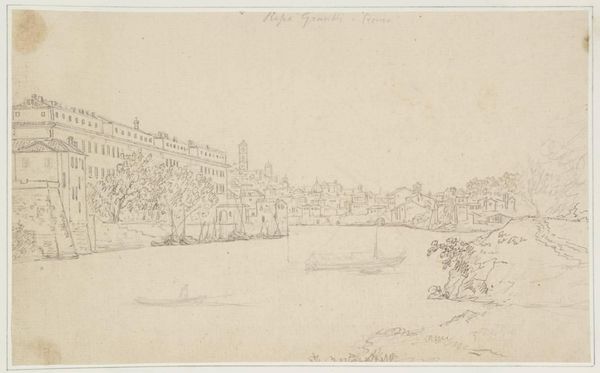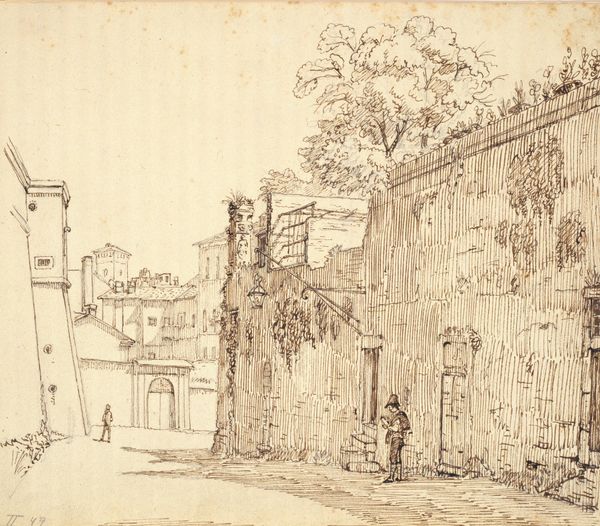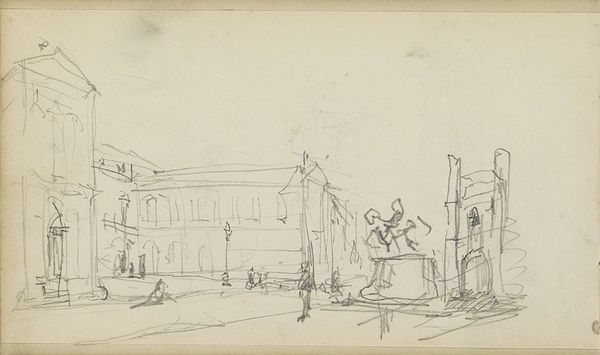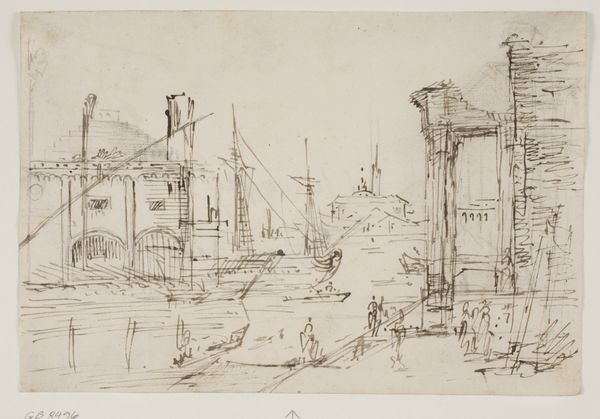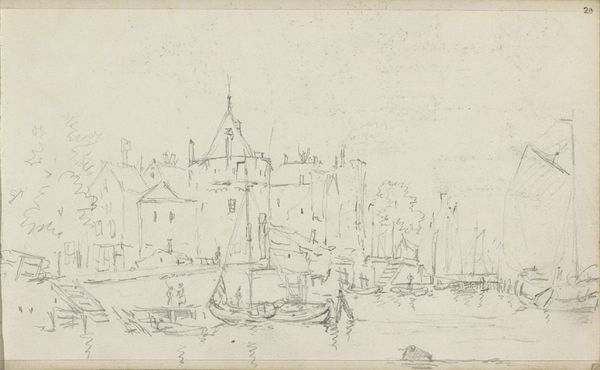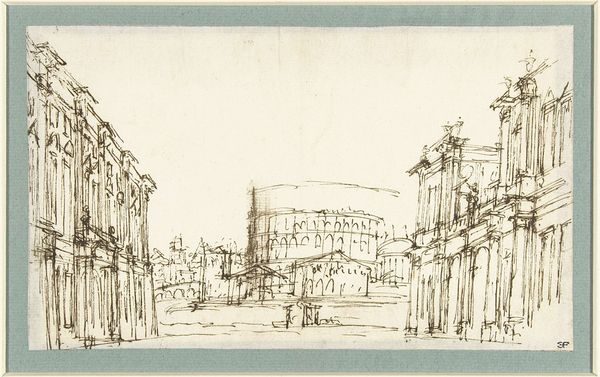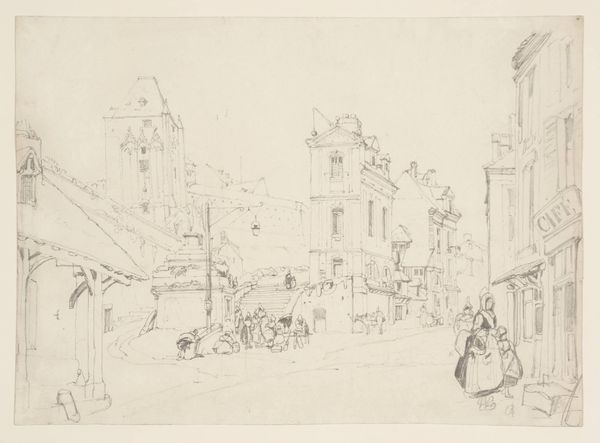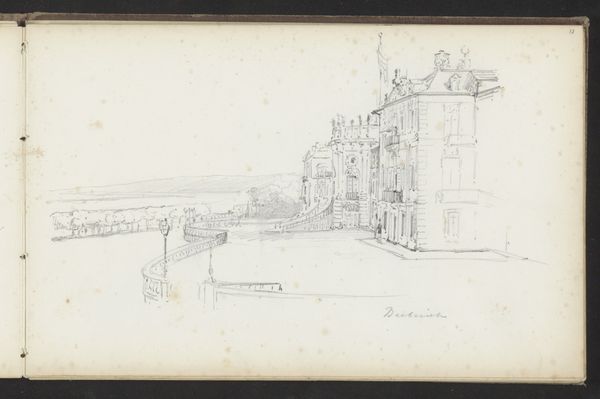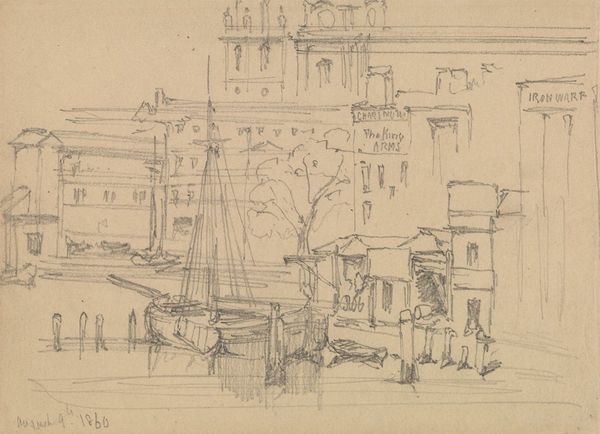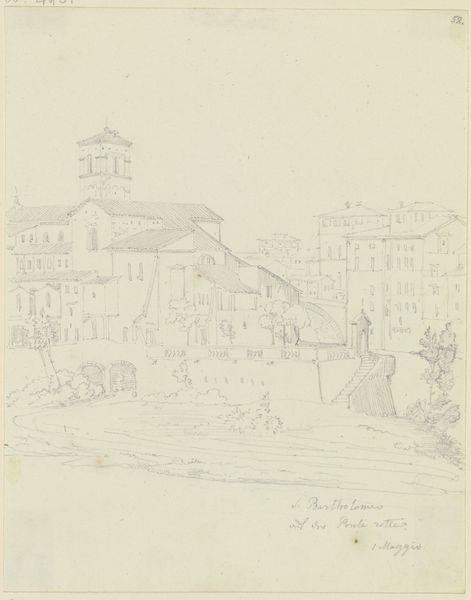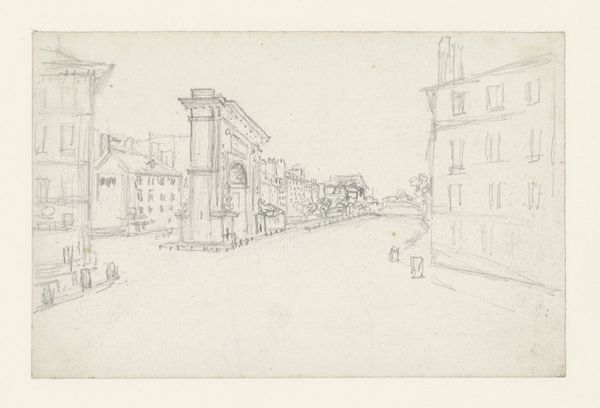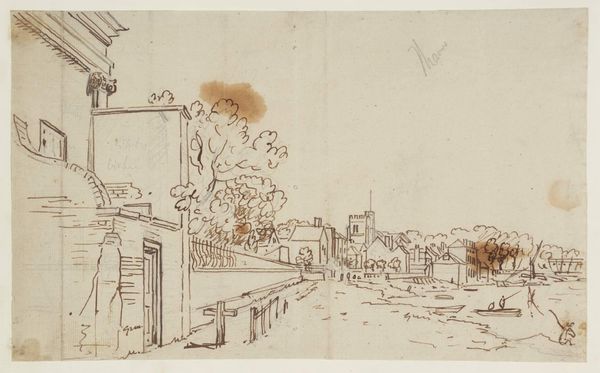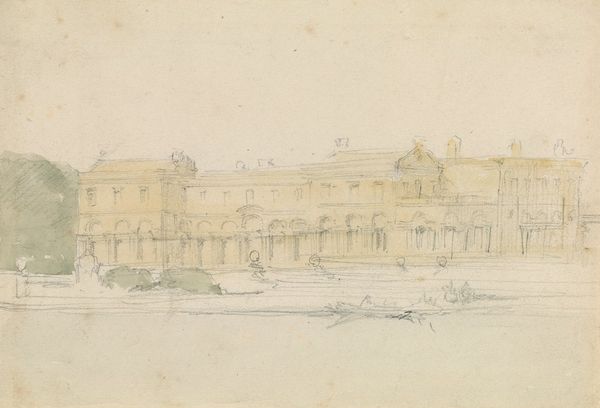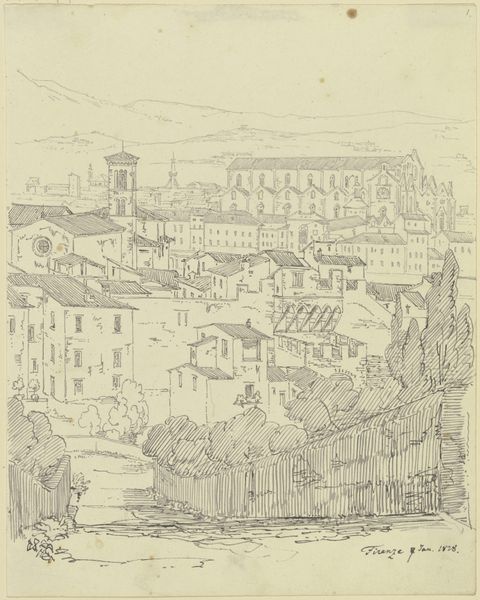
drawing, plein-air, paper, ink
#
architectural sketch
#
drawing
#
aged paper
#
plein-air
#
sketch book
#
landscape
#
etching
#
paper
#
romanesque
#
personal sketchbook
#
ink
#
sketchwork
#
pen work
#
sketchbook drawing
#
cityscape
#
storyboard and sketchbook work
#
sketchbook art
Dimensions: height 76 mm, width 91 mm
Copyright: Rijks Museum: Open Domain
Curator: This delicate ink drawing is entitled "Gezicht op de Tiber in Rome bij de Longara," or "View of the Tiber in Rome near the Longara," and it was created by Victor Jean Nicolle sometime between 1787 and 1811. Editor: The hurried lines suggest an artist quickly trying to capture a fleeting moment, almost like a snapshot. It's amazing how much detail Nicolle captures with so few strokes of his pen! There is a lot of life distilled onto the page. Curator: Absolutely, you can see the etching-like quality that comes through with his penwork. I find it interesting how Nicolle uses line weight to suggest depth. The architectural sketch prioritizes specific linear structures over realistic volume, but that gives it its charm and highlights labor-intensive architecture on the Tiber. Editor: And it immediately evokes the socio-economic realities of the time—Rome as both a historical site of grandeur, represented in the architecture, and a contemporary working city. Notice the figure at the edge of the river, perhaps fishing or washing. Their labor contrasts against the backdrop of these historical structures, questioning who has access to that grand history and landscape. Curator: Indeed, this personal sketchbook drawing isn't just about aesthetics; it speaks to how architecture is experienced. It’s about lived reality, not just visual splendor. And it all comes back to Nicolle's labor in observing, selecting, and transcribing it all with humble materials. Editor: Right. By choosing the less refined form of the sketch and by focusing on the everyday activity occurring along the Longara, Nicolle is creating an intimacy and questioning classical conventions of elevated, sublime landscapes, which are inherently exclusionary. Curator: A vital consideration in understanding how images like this negotiate the relationship between power, history, and artistic representation. It provides insight on the artist's relationship to labor too—both theirs, and those they choose to portray. Editor: This small sketch invites us to consider the broader social context and Nicolle’s possible intentions or biases when documenting the scene on the Tiber. Curator: Ultimately, that dialogue, fueled by understanding material practices, makes for richer understanding of the image, as well as historical Roman life along the Longara during this era.
Comments
No comments
Be the first to comment and join the conversation on the ultimate creative platform.
